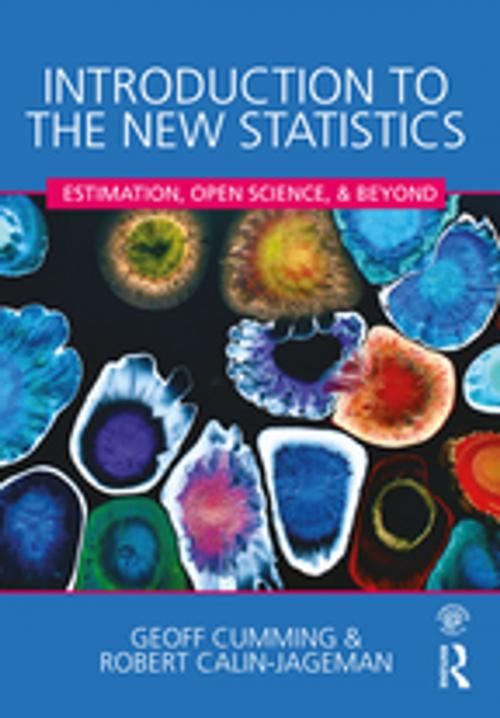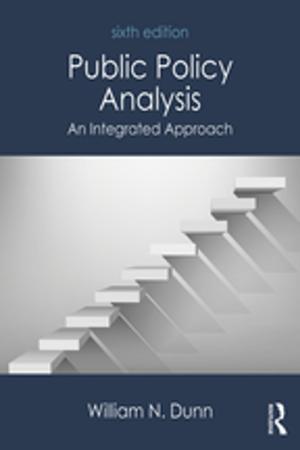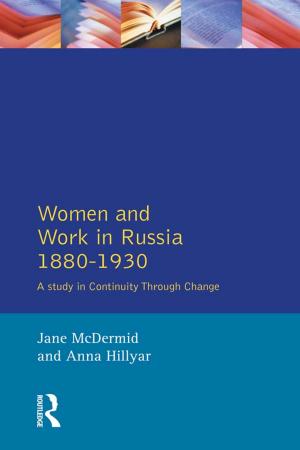Introduction to the New Statistics
Estimation, Open Science, and Beyond
Nonfiction, Reference & Language, Education & Teaching, Teaching, Statistics, Health & Well Being, Psychology, Business & Finance, Economics| Author: | Geoff Cumming, Robert Calin-Jageman | ISBN: | 9781317483366 |
| Publisher: | Taylor and Francis | Publication: | October 4, 2016 |
| Imprint: | Routledge | Language: | English |
| Author: | Geoff Cumming, Robert Calin-Jageman |
| ISBN: | 9781317483366 |
| Publisher: | Taylor and Francis |
| Publication: | October 4, 2016 |
| Imprint: | Routledge |
| Language: | English |
This is the first introductory statistics text to use an estimation approach from the start to help readers understand effect sizes, confidence intervals (CIs), and meta-analysis (‘the new statistics’). It is also the first text to explain the new and exciting Open Science practices, which encourage replication and enhance the trustworthiness of research. In addition, the book explains NHST fully so students can understand published research. Numerous real research examples are used throughout. The book uses today’s most effective learning strategies and promotes critical thinking, comprehension, and retention, to deepen users’ understanding of statistics and modern research methods. The free ESCI (Exploratory Software for Confidence Intervals) software makes concepts visually vivid, and provides calculation and graphing facilities. The book can be used with or without ESCI.
Other highlights include:
- Coverage of both estimation and NHST approaches, and how to easily translate between the two.
- Some exercises use ESCI to analyze data and create graphs including CIs, for best understanding of estimation methods.
-Videos of the authors describing key concepts and demonstrating use of ESCI provide an engaging learning tool for traditional or flipped classrooms.
-In-chapter exercises and quizzes with related commentary allow students to learn by doing, and to monitor their progress.
-End-of-chapter exercises and commentary, many using real data, give practice for using the new statistics to analyze data, as well as for applying research judgment in realistic contexts.
-Don’t fool yourself tips help students avoid common errors.
-Red Flags highlight the meaning of "significance" and what p values actually mean.
-Chapter outlines, defined key terms, sidebars of key points, and summarized take-home messages provide a study tool at exam time.
-http://www.routledge.com/cw/cumming offers for students: ESCI downloads; data sets; key term flashcards; tips for using SPSS for analyzing data; and videos. For instructors it offers: tips for teaching the new statistics and Open Science; additional homework exercises; assessment items; answer keys for homework and assessment items; and downloadable text images; and PowerPoint lecture slides.
Intended for introduction to statistics, data analysis, or quantitative methods courses in psychology, education, and other social and health sciences, researchers interested in understanding the new statistics will also appreciate this book. No familiarity with introductory statistics is assumed.
This is the first introductory statistics text to use an estimation approach from the start to help readers understand effect sizes, confidence intervals (CIs), and meta-analysis (‘the new statistics’). It is also the first text to explain the new and exciting Open Science practices, which encourage replication and enhance the trustworthiness of research. In addition, the book explains NHST fully so students can understand published research. Numerous real research examples are used throughout. The book uses today’s most effective learning strategies and promotes critical thinking, comprehension, and retention, to deepen users’ understanding of statistics and modern research methods. The free ESCI (Exploratory Software for Confidence Intervals) software makes concepts visually vivid, and provides calculation and graphing facilities. The book can be used with or without ESCI.
Other highlights include:
- Coverage of both estimation and NHST approaches, and how to easily translate between the two.
- Some exercises use ESCI to analyze data and create graphs including CIs, for best understanding of estimation methods.
-Videos of the authors describing key concepts and demonstrating use of ESCI provide an engaging learning tool for traditional or flipped classrooms.
-In-chapter exercises and quizzes with related commentary allow students to learn by doing, and to monitor their progress.
-End-of-chapter exercises and commentary, many using real data, give practice for using the new statistics to analyze data, as well as for applying research judgment in realistic contexts.
-Don’t fool yourself tips help students avoid common errors.
-Red Flags highlight the meaning of "significance" and what p values actually mean.
-Chapter outlines, defined key terms, sidebars of key points, and summarized take-home messages provide a study tool at exam time.
-http://www.routledge.com/cw/cumming offers for students: ESCI downloads; data sets; key term flashcards; tips for using SPSS for analyzing data; and videos. For instructors it offers: tips for teaching the new statistics and Open Science; additional homework exercises; assessment items; answer keys for homework and assessment items; and downloadable text images; and PowerPoint lecture slides.
Intended for introduction to statistics, data analysis, or quantitative methods courses in psychology, education, and other social and health sciences, researchers interested in understanding the new statistics will also appreciate this book. No familiarity with introductory statistics is assumed.















